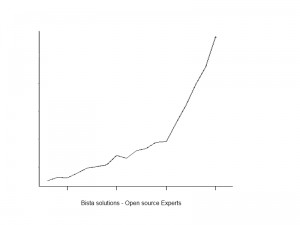European Commission Invests EU: €3.34 Million On Open Source Projects
The European Commission (EC) is planning to spend €3.34 million until 2016 to continue the services provided by its projects – such as OSOR.EU and Semic.EU – on Open Source Projects and on electronic data exchange.
The EC published the budget details for its eGovernment project on 8 July 2010. Apart from the €3.34 million planned for the new platform to provide collaborative services for current Semic.EU and OSOR.EU users, an additional €8.8 million is foreseen to provide support for existing and future communities dealing with eGovernment in general. This includes the growing Open Source community on OSOR.EU and the community covering interoperability assets on Semic.EU.
he main feature of these projects is their all-encompassing approach, ensuring involvement of multiple stakeholders and promoting the mobilisation of at least one other funding source, be it EU, national or private. LIFE Integrated Projects were introduced to help Member States comply with key EU legislation in four areas: Nature, Water, Air and Waste.
Karmenu Vella, EU Commissioner for the Environment, Maritime Affairs and Fisheries, said: “This is an example of Europe directly investing in citizens’ quality of life. To best tackle major environmental and health challenges such as air and water pollution or biodiversity loss, existing policies must be made to work towards the same goals. Integrated Projects deliver precisely that.”
The Integrated Projects in Belgium, Finland and Italy will help conserve Europe’s nature, on a far wider scale than has previously been the case. The Nature projects have a combined budget of € 56.3 million, of which € 33.3 million is EU-funded. The projects can facilitate the coordinated use of € 393 million of complementary funding, such as for infrastructure through other available EU funds, in the management of environmentally protected Natura 2000 sites.
The Integrated Projects in Germany and the UK will contribute to the implementation of River Basin Management Plans, while the project in Poland will support implementation of a regional Air Quality Plan. Together, these three projects have a combined budget of € 52.4 million, of which € 30.4 million is EU-funded, and could facilitate the coordinated use of over € 1 billion of complementary funding.




